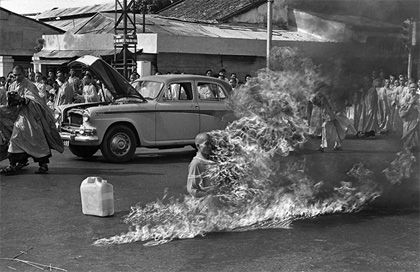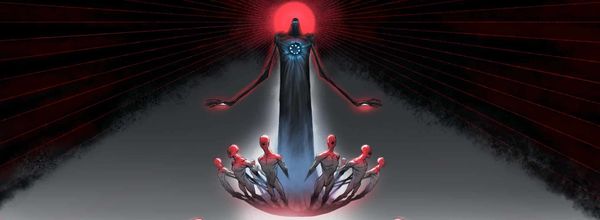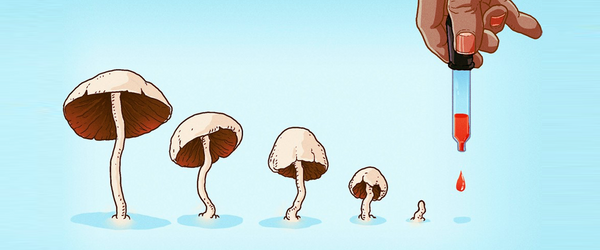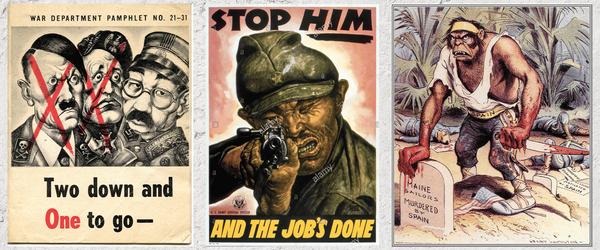Christopher Ponzi • • 12 min read
The Power of Protest: 15 Methods to Make Yourself Heard

What do youth in Egypt, Syria, Britain, Spain, Greece, Italy, China, Indonesia, Chile, Mexico, France, Russia and the United States have in common?
They are all protesting.
Since the Sixties and the Summer of Love sang its last peaceful note at a Rolling Stone concert turned violent and the Civil Rights Movement lost its great champion to an assassin’s bullet, protesting has slipped into the shadows of American public consciousness. Many even argue it has been demonized, radicalized and criminalized by a generally compliant and distracted culture.
But things are changing.
Most of us can feel it like an electric shiver dancing up the spine, hear it rising from the static rubble of collapsing norms…a profound moment in our history is coming. I don’t speak of cosmic catastrophes or the rise of religious saviors, but the tectonic plates of the times are shifting the major socioeconomic and political status quos of the world. People here and abroad, especially the youth, are fed up with so much and want to change the course of humanity so badly that they can no longer sit idle and hope for the best.
Neither can we.
We are fast approaching an age where signing petitions, spreading videos and articles, posting and passing angry e-mails won’t be enough. We must back our words with actions, put boots on the ground, and give our convictions a human face. We here are the soldiers of peace, warriors of love, heroes of gorgeous dissent, pioneers of the profound, and if we don’t do anything to advance our beautiful ideals, who will?
“He who passively accepts evil is as much involved in it as he who helps to perpetrate it. He who accepts evil without protesting against it is really cooperating with it.”
– Martin Luther King, Jr.
The beauty and complexity of protesting is that it manifests itself in so many ways. I will name a few in this piece, but it is really only limited by the imagination. If you are interested, two great documentaries on protest tactics and resistance cultures around the world are “Just Do It: A Tale of Modern-Day Outlaws” (http://justdoitfilm.com)and “Cultures of Resistance.” (http://www.culturesofresistance.org/)
Before you begin your journey to protest, however, you absolutely must…
GET EDUCATED!
Whatever your chosen cause, you must understand it better than anyone. Educate yourself well on the fundamentals and complexities using research and source materials from diverse perspectives. Truth is a prerequisite to progress and many protesters fall prey to ideological dogma, fanaticism, superficial understanding, swarm mentalities, and one-sided perspectives. Most things are not black and white. You will do no justice to yourself, your cause, and humanity by throwing up an emotionally driven, uneducated fist into the air.
“I’m for truth, no matter who tells it. I’m for justice, no matter who it’s for or against”-Malcolm X
I also don’t believe in and therefore don’t advocate violent protest tactics. Human creativity is boundless and there are far more effective tactics. Thus everything below is geared towards creative nonviolent direct action.
“We are constantly being astonished these days at the amazing discoveries in the field of violence. But I maintain that far more undreamt of and seemingly impossible discoveries will be made in the field of nonviolence”-Mohandas Gandhi
Historical vs. Uniquely Modern Protest Tactics:
Most of these powerful tactics can and are still used today, but there have been some interesting evolutions since our dissenting forefathers’ times. Remember that with most of these, the more the merrier.
Signage:
“I can’t afford a politician so I made this sign”- notable sign from Occupy Wall Street
Crafting a clever or inspirational sign/poster and carrying it to a public place where people will see it and ask you questions is a very organic way of spreading awareness and speaks volumes about your dedication. Think that’s easy? Test your nerves by holding up a sign alone in a crowded street; you’ll gain a new admiration for those you may have ignored in the past.
Then vs. now: Media tools like Photoshop can make for very creative and effective signage. Inspirational graffiti and artwork can also have a tremendous effect. Check out “Inside Out: a Global Art Project” to see what I mean. http://www.insideoutproject.net/#@section=home
Sit-Ins:
“Disobedience is the true foundation of liberty. The obedient must be slaves”-Henry David Thoreau
From diners to department stores, sitting with a group of people for an extended period of time within the heart of what you’re fighting against is powerful. On February 1, 1960 four African-American college freshmen in Greensboro, Alabama ignited a series of sit-ins when they refused to leave the all-white section of a segregated lunch counter. Their small protest contributed greatly to the spread and efficacy of the Civil Rights Movement.
Then vs. Now: Sit-ins have evolved somewhat into “Occupy a Public Space.” This is the principal Occupy Movement tactic that basically says you set up a 24-hour camp in a public space, usually in front of what you’re protesting against (banks and government buildings in their case), in order to raise awareness, be a physical manifestation of your unrest, and put pressure on those corrupt forces.
Shouting:
“I decided it is better to scream. Silence is the real crime against humanity”- Nadezhda Mandelstam.
Is this a tactic? You betcha. But it must be used sparingly and when appropriate. Shouting at people is only useful when the goal is to make people feel uncomfortable, but it can often lead to a very negative image. When chanting a unified message, however, it gains a whole new sense of inspirational power for others and for your group.
Then vs. Now: Shouting is still pretty much the same, but one could argue with Facebook and Twitter posts we now have the ability to “electronically shout” and spread messages. “The People’s Microphone,” another Occupy invention, is very cool in that, when denied the permits to use amplification sound equipment, the people convey the message of the speaker by repeating it in a wave of shouts, through human vocal amplification. It’s a beautiful sight to behold.
Silence and Stillness:
“You must learn to be still in the midst of activity and to be vibrantly alive in repose”- Indira Gandhi.
Watch old clips of civil rights protestors being screamed at by police and agitated racists, practically spitting in their faces, or Buddhist monks being smacked around by soldiers…they aren’t saying a word in protest (ironically). A fundamental tenet of nonviolent resistance is remaining silent in the twisted face of rage, authority, or hate and can be a powerful symbol of your own inner peace and strength. Not only that, it can make those screaming at you look mean and vicious, helping to garner you outside support.
Then vs. Now: The only real difference is that certain groups have made silence more menacing and proactively provocative. The hacker group Anonymous is an ideal example of this with their iconic Guy Fawkes’ masks that allows their faceless silence to percolate the air with mystery.
Mass Demonstration:
“Each time a man stands up for an ideal, or acts to improve the lot of others, or strikes out against injustice, he sends forth a tiny ripple of hope…building a current that can sweep down the mightiest walls of oppression and resistance”-Robert F. Kennedy
Get as many people as you can to create a mass of bodies that display the magnitude of your cause. You can employ a wide array of tactics within this mass demonstration and ideally utilize this body towards a common goal. It is also a great way to unite with other like-minded groups to show solidarity and strength in numbers. It is hard for anyone to write off a cause that has hundreds, even thousands, behind it.
Then vs. Now: Not much difference here. Social media and cellphones make it easier to galvanize a wider range of people faster. The more you plan ahead the larger the demonstration will be.
Marches:
“Don’t threaten me with love, baby. Let’s just go walking in the rain”- Billie Holiday
Where a large group of protestors basically walks or “marches” to a predetermined destination to raise awareness, show strength, and demonstrate civil disobedience. Gandhi’s Salt March in 1930 over the Indian government’s unfair salt tax is a famous example where the spiritual leader led thousands of Indians in a 240-mile march from Ahmedabad to the coastal town of Dandi. The Salt March eventually inspired hundreds of thousands of his fellow Indians to revolt, leading to over 60,000 arrests, and birthed an incredible movement that changed India and the world forever.
Then vs. Now: Marches are even more potent today. We are a culture of cars, gas, and the “get there fast” mentality. Thus, taking the time to actually walk long distances symbolically is even more special. There are also modern-day mechanized interpretations like motorcycle marches, bicycle marches, car brigades, etc.
Propaganda:
“You can write me down in history with hateful, twisted lies, you can tread me in this very dirt, but still, like dust, I’ll rise” – Maya Angelou
Propaganda usually has a negative context of spreading lies and manipulative rumors in order to distort something or purport a false belief. However, righteous causes also understand that disseminating factual and inspirational information/literature about their cause is a vital tool for recruitment, awareness, and to clarify ideology. Ideas are immortal if they ring true.
Then vs. Now: Many times, publishing the information the opposition DOESN’T want people to see can be incredibly effective. Wiki-Leaks is the most famous contemporary example of disseminating the gruesome underbelly of governments and corporations. Social Media, documentaries, blogs, FB and Tweet Posts, YouTube Videos and E-mail are all modern ways to spread information through a wider net and with various creative mediums.
Boycotts:
“The main problem is that for a boycott to be effective, you must first persuade thousands – maybe even millions of others – to go along, which is a lot of work and usually not successful”- L. Neil Smith.
A lost protest art here in our consumer-driven society. A boycott is abstaining from buying or using something. For example, you found out about how Coca Cola mistreats its Latin American workers (actually happens) so you organize a group of people to stop using Coca Cola products. It’s important to note that, even if the boycott is small, the psychological effect of a “don’t buy” in an otherwise “always buy” culture is profound, especially to corporations who care more about their bottom line than anything else. Perhaps the most famous American boycott is the Montgomery Bus Boycott in 1955 ignited by the intrepid Rosa Parks where the black community stopped riding the segregated buses until they desegregated.
Then vs. Now: The key here is to find ways to publicize the boycott. Back in the day, state and local papers were more essential along with word of mouth, so people heard what was going on easier. Now, with massive multi-national corporations, Wall Mart-sized walls of products, and a plethora of media distractions, a local or regional boycott could get lost in the mix. Here is a great article on boycotts: (http://boycott-thieves.blogspot.com/2005/11/boycotts-famous-ones-tips-for.html)
Putting Your Body in the Way of Big Things:
“The meaning of his moment–it was no more than that–was instantly decipherable in any tongue, to any age”- Time Magazine.
Most everyone recognizes the iconic picture of “The Tank Man of Tiananmen,” (http://lens.blogs.nytimes.com/2009/06/03/behind-the-scenes-tank-man-of-tiananmen/) the lone Chinese man who, after the Tiananmen Square massacre that killed hundreds of protesters, stood in front of a column of rolling tanks. While very dangerous, standing or sitting in front of large machinery, weaponry, or authority figures is a profound symbol of the brave resistance of the individual versus the mighty machine.
Then vs. Now: Just make sure there is a camera filming and you know what you’re getting yourself into.
Taking the Hit:
“Daring ideas are like chessmen moved forward; they may be beaten, but they may start a winning game”- John Wolfgang von Goethe.
Perhaps the truest test of the nonviolent spirit. Taking a punch, a full-blown beating, a nightstick or pepper spray to the face and not responding in kind is TOUGH! Much like the silence tactic, however, taking the hit and remaining peaceful will help to demonize your opposition in the public eye and rouse the injustice in the hearts of onlookers. It will also lend credence to nonviolent methods, which is the hope of most modern-day protestors.
Then vs. Now: The military and police have developed a vast array of “nonviolent” weaponry such as metal bean bag rounds, pellets, stun guns, etc. which can knock you out instantly or worse. Again, always have a cameraman around and recognize that just because they might not be real bullets, doesn’t mean they can’t cause serious damage.
Sabotage:
“Procrastination is, hands down, our favorite form of self-sabotage”- Alyce P. Cornyn-Selby.
This comes in all shapes and sizes. Basically anything that disrupts, interrupts, or permanently halts operations of your opposition. It is usually “illegal.” Whether it’s stopping the foreclosure of a house through a show of bodies or ripping out the bulldozer circuitry, sabotage is an extreme but sometimes necessary method.
Then vs. Now: Once again, the highly secretive activist hacker group “Anonymous” takes electronic sabotage into the 21st century by hacking into various government and corporate systems and doing a whole bunch of crazy computer things I couldn’t begin to explain. If you’re good with the techno-stuff, this is your time to shine.
Silliness:
“Ridicule is man’s most potent weapon. It is almost impossible to counteract ridicule. Also it infuriates the opposition, which then reacts to your advantage”- Saul Alinsky
Not often thought of as a protest tactic, it can, in the right setting and moment, be very effective. Protesting doesn’t have to be all angst and anger, blood and bullets…it can be, yea, fun. Whether it’s a protest skit, a scathing comedic performance, or a funny video satirizing the opposition, humor is part of our humanity and can lighten the load of heavy times. It can also piss off the oh-so-serious opposition something fierce. Remember, if you don’t recognize authority’s power, it has none. If you laugh at authority’s power, it has even less.
Then vs. Now: Once again, the ability for more and more people to make their own videos, podcasts, and photos allows the creative hilarity to flourish and the audience to grow in a matter of hours. Humor tends to go viral more and is digestible by a wider demographic.
Flash Mobs:
“All the ills of mankind, all the tragic misfortunes that fill the history books, all the political blunders, all the failures of the great leaders have arisen merely from a lack of skill at dancing”-Moliere.
This can tie into the silliness. “Flash Mob” is a completely modern invention where groups of people assemble suddenly in a public place to perform an unusual and seemingly pointless act for a brief time, and then disperse. While not originally or solely a protest tactic, it can absolutely be a fun and creative way to make your presence known and bounce out before anyone can figure out what to do with you. While I’ve never done it…I’d really like to. Here is a list of some awesome flash mob videos!
Hunger Strike:
“Being unwanted, unloved, uncared for, forgotten by everybody, I think that is a much greater hunger, a much greater poverty than the person who has nothing to eat”-Mother Theresa.
This one is intense and is used mostly by political prisoners. A hunger strike is basically where you refuse to eat until your particular demands are met. Bobby Sands, of the Provisional Irish Republican Party, is one of the most famous and controversial political prisoners who led a hunger strike in 1981 while imprisoned by the British. He went 66 days until dying from his strike. This event was turned into a moving movie called Hunger (http://www.youtube.com/watch?v=dmVPCX0LxN8), and was one of the breakout roles for the now lead-man actor (who is so skinny in this movie it’s ridiculous) Michael Fassbender. Worth a watch.
Then vs. Now: Still as powerful as ever, but should only be used as a last resort and when all other tactics fail. Make sure the outside world knows about your strike so they can put pressure on your captors.
Self-Immolation:
“The world is still enamored of this romantic image of the noble saffron-cloaked monk” – Unknown
Self-immolation is setting fire to oneself in the final act of protest. I am not advocating this tactic at all, but by not mentioning it, I would be doing an injustice to the courageous few who have used it with history-shaking results. The most famous historical example, the photo we all recognize that makes us instantly pause and reflect, is that of Thích Quảng Đức. He was the Vietnamese Mahayana Buddhist monk who burned himself to death in a busy Saigon street protesting the persecution of Buddhists by South Vietnam’s Roman Catholic government.
Then vs. Now: Many still don’t know this, but the recent Arab Spring can be traced back to Mohamed Bouazizi, a Tunisian street vendor who, after years of humiliation and abuse by corrupt government officials, set himself on fire on December 17, 2010, “in protest of the confiscation of his wares and the harassment and humiliation that he reported was inflicted on him by a municipal official and her aides.” His act became a catalyst for the Tunisian Revolution and the Arab Spring, inciting demonstrations and riots throughout Tunisia.

There is so much more to be said about protesting and its tactics, but if there is one important thing I can say here, it is to always be without fear. “You should never let your fears prevent you from doing what you know is right,” says Aung San Suu Kyi. Fear is the greatest enemy of the protestor and to overcome it is his greatest strength and asset. Nonviolent protesters refuse to follow the fear-driven mentalities of their culture and the opposition, they remain adamant in their convictions that love and inspiration for something greater than themselves will win the day. The road is not easy or quick, but their steadfast dedication amongst all sorts of opposition, both metal and physical, lifts them to a new plateau of peaceful strength.
I ask all of you to think hard on the days to come and what you hold to be true. Are you willing to hit the streets to defend them? Are you ready to join the courageous community of those who stand for something? Are prepared to wield the power of protest? If you are, always be without fear and know that you will never be alone in your struggle.










